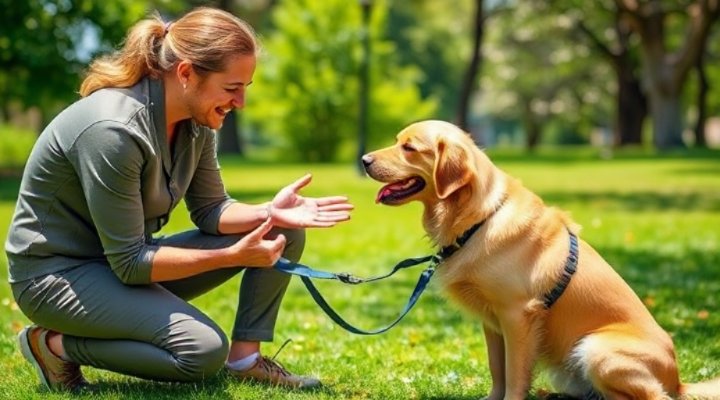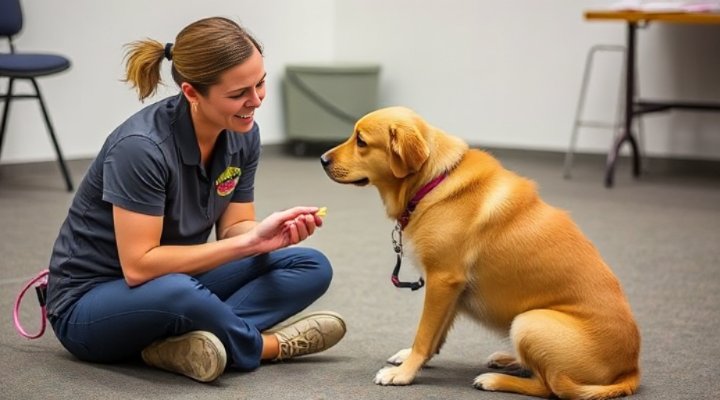Have you ever watched a dog whisperer work their magic and wondered how they make it look so effortless? Professional dog trainers seem to have an almost supernatural ability to communicate with canines. But the truth is, their techniques are based on science, observation, and years of experience. In this article, we’ll uncover the secret methods these experts use to create harmonious relationships between dogs and their humans.

The Language of Dogs: Understanding Canine Communication
Professional dog whisperers begin by mastering the subtle language of dogs. Unlike humans who rely primarily on verbal communication, dogs express themselves through body language, vocalizations, and energy. For instance, a wagging tail doesn’t always mean happiness – the position and speed of the wag convey different messages.
I remember when I first adopted my rescue dog, Max. He would often yawn when I approached him, which I mistakenly interpreted as tiredness. Later, I learned from a local dog behaviorist that this was actually a calming signal, his way of saying he felt uncomfortable. This revelation completely changed how I interacted with him.

Positive Reinforcement: The Golden Rule of Dog Training
Modern dog whisperers swear by positive reinforcement techniques. This method focuses on rewarding desired behaviors rather than punishing unwanted ones. According to the American Veterinary Society of Animal Behavior, positive reinforcement creates stronger learning and better relationships between pets and owners.
The key is timing – rewards must come immediately after the desired behavior. Whether it’s a tasty treat, verbal praise, or a favorite toy, the reward helps the dog associate the action with something positive. I’ve found that small pieces of cooked chicken work wonders with my picky eater!
Clicker Training: A Powerful Tool
Many professionals use clicker training as part of their positive reinforcement toolkit. The distinct sound of the clicker marks the exact moment the dog performs correctly, followed by a reward. This precise communication helps dogs learn faster. If you’re interested in trying this method, check out our guide on dog training clickers.

Reading Energy: The Subtle Art of Canine Connection
Experienced dog whisperers understand that dogs are incredibly sensitive to human energy and emotions. They maintain calm, assertive energy that helps dogs feel secure. This doesn’t mean being dominant or aggressive – quite the opposite. It’s about projecting confidence and consistency.
When working with anxious dogs, professionals often use techniques like:
- Slow, deliberate movements
- Soft, soothing vocal tones
- Appropriate eye contact (not staring)
- Respecting the dog’s personal space
These methods are particularly helpful for rescue dogs with traumatic pasts, as detailed in our article on dog behavior modification.

Customized Approaches for Different Personalities
Just like people, every dog has a unique personality. Skilled dog whisperers adapt their techniques to suit individual temperaments. A high-energy border collie might thrive on challenging agility exercises, while a shy basset hound may need gentle encouragement to build confidence.
Some common personality types and matching approaches include:
| Personality | Training Approach |
|---|---|
| Energetic/Playful | Incorporate games and physical activity |
| Anxious/Nervous | Slow progression with lots of positive reinforcement |
| Stubborn/Independent | High-value rewards and clear consistency |
| Eager-to-Please | Verbal praise and affection as rewards |
For puppies just starting their training journey, our puppy training guide offers age-appropriate techniques.

Building Trust: The Foundation of All Training
At the heart of every successful dog whisperer’s method is trust. Dogs who trust their humans are more willing to learn and cooperate. Building this bond takes time and patience, but the results are worth it.
Some trust-building exercises include:
- Hand-feeding meals to create positive associations
- Gentle handling exercises to desensitize to touch
- Predictable routines that provide security
- Respecting the dog’s boundaries and signals
Remember, training isn’t just about obedience – it’s about creating a lifelong friendship with your canine companion. As certified professional dog trainer Victoria Stilwell says, ‘The more you understand your dog, the better your relationship will be.’
Related Keywords
dog training techniques, professional dog trainers, canine communication skills, positive reinforcement training, dog behavior modification, puppy training methods, advanced dog training, building trust with dogs, dog psychology, expert dog training tips
